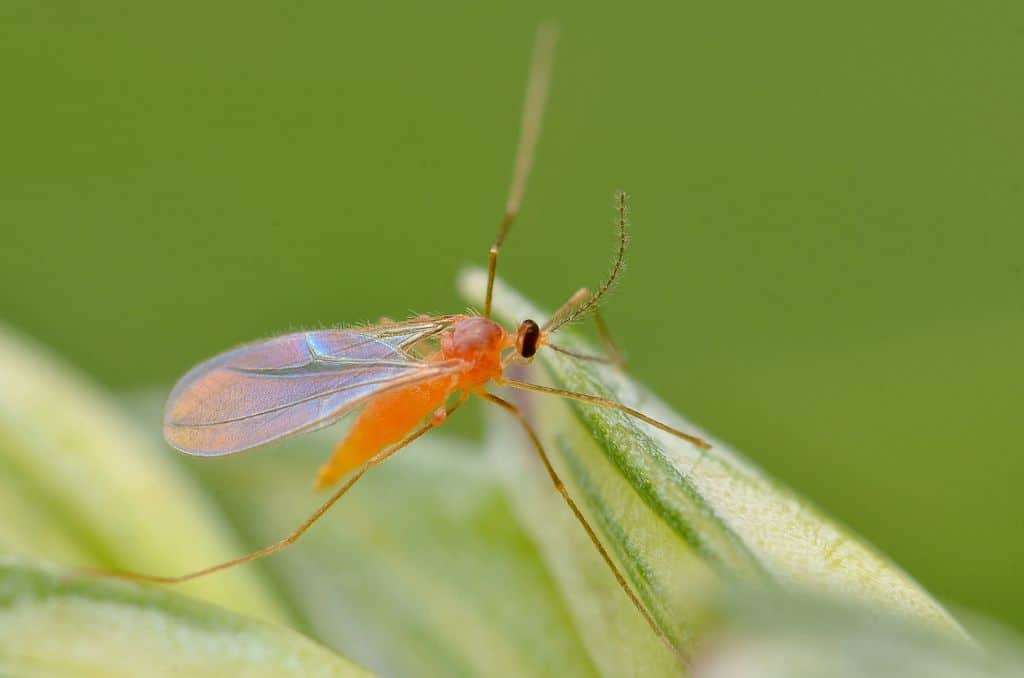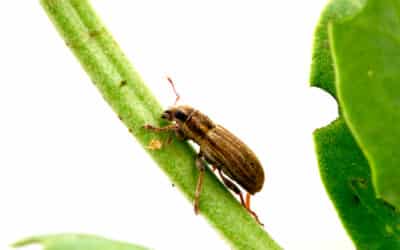For 13 growing seasons, wheat farmers in Western Canada have had access to a powerful agronomic tool against wheat midge. That’s how long the wheat midge tolerant gene (Sm1) has been available and it’s a game changing technology against this unpredictable prairie pest. Today, an estimated 32 per cent of wheat planted in Western Canada is midge tolerant.
And yet, the work continues to learn more about wheat midge control and its impact on wheat crop yields and quality. Tyler Wist, a field crop entomologist with Agriculture and Agri-Food Canada (AAFC) has been looking at ways to protect the integrity of the wheat midge tolerance gene over the past several years.
Best Year for Midge Busters
One of his wheat midge activities has been Midge Busters (#midgebusters) – a collaborative field project Wist coordinates with SeCan to monitor midge populations each year. The project is wrapping up its third year and provides invaluable farm field data that helps Wist compare provincial midge forecasts to actual emergence in the spring and summer months.
“You never know where the midge hot spots will be, so it’s been great to watch the evolution of this program and the growing number of locations,” says Todd Hyra, business manager for Western Canada with SeCan Seeds.
Field Results and Findings
Midge Busters participants record trap information that ultimately gets to Wist so he can track actual emergence.
“We’re still analyzing data from 2023 but we saw an average of 310 male midges per trap,” says Wist. That’s lower than 2022 numbers but not surprising to Wist given the dry conditions this year.
Another interesting development Wist was able to monitor through Midge Busters was a second spike of wheat midge activity in some areas.
“If you get enough rain, the wheat crop can start tillering and could be susceptible again to wheat midge,” says Wist. “We saw some spikes in trap counts in late July and early August.”
The good news is that while males were showing up in traps, and females might be close behind, there isn’t anywhere viable for the female to lay their eggs.
Stick with Sustainable Approach
Since Midge Tolerant Wheat has been available, growers haven’t had to compromise on yield.
“Growers will find every trait they want in Midge Tolerant Wheat – strong short straw, very good lodging resistance, and many with very good resistance to Fusarium,” says Hyra.
Growing Midge Tolerant Wheat requires growers to sign a Stewardship Agreement to ensure the integrity of the technology and ensures every seed lot contains a 10 per cent refuge of non-resistant seed to reduce the likelihood of wheat midge developing resistance to the Sm1 gene.
“The sustainability of this trait is so important for Western Canada because of the value it provides for effective midge management, protecting yield and grade quality, and reducing pesticide load on the farm,” says Hyra. “It works really well from an environmental and practical standpoint.”
For Wist, the message to producers about midge management is consistent and clear.
“Never turn your back on wheat midge. It can last up to 13 years in the soil and still be viable,” he says.





